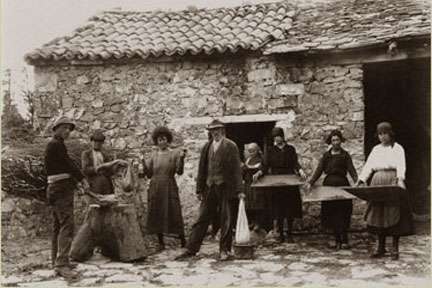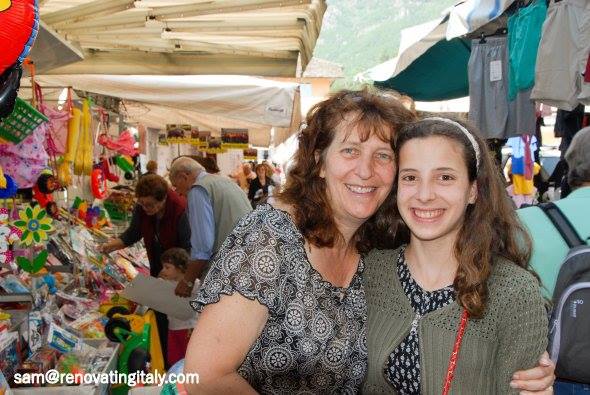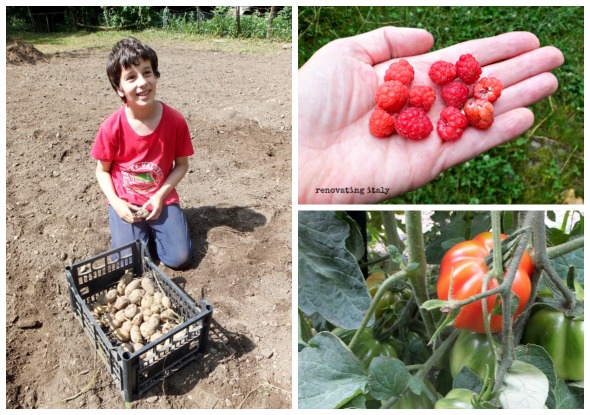The ancient art of drying chestnuts – we find out what the Metato is for….
Salvatore (Sam to anyone not in Italy) finished painting the walls of the Metato – Castagne (Chestnut) room…
Notice the small door (top right hand corner), this is where the chestnuts would be put through onto the mesh for smoking. The walls are covered in a black tar like substance which the locals assure us will never be able to be painted… you can see the beams that held the mesh and the little door above.
Sam came up with a mix of cement, lime and something like bondcrete to bind it all to the wall. First he coated the walls with the watered down bondcrete mix to seal them.
The great thing about dirt floors is you don’t have to worry about drop-sheets!
The “paint” went on with the “paint throwing machine” although we ended up using a brush like the top of a yard broom in the end to get the mix on the walls…
Sam and Carina had great fun putting the ceiling boards in, the upper level is her new “cubby house” … she can get into all the small angled places, hold nails and is learning to use the hammer…our little “reno girl”
We lined the dirt floor and put lining boards on the ceiling, oiled the door (and found the key) and the windows are in.
Life’s Postcards
So what is a Metato?
When you want to know something ask a local.
Joseph grew up in the “Snow White” cottage at Borga Nari, so we asked him about the strange little door in our house. He told us that as children (he had nine brothers and sisters) the family would collect the castagne and dry them in the metato to make flour. “Ahhh so that’s what it’s for” at last we know!
In the metato there would be a mesh floor on the upper level holding the castagne and underneath a couple of smouldering fires.
The chestnuts would be smoked for six or seven weeks (getting turned every couple of weeks) and at the end would have shrunk to a third of their original size.
The flour was used to make bread and was the main source of food for the winter.
The mountains around our house are covered with castagneti (chestnut woods) and for us it is a fun afternoon exercise to roast them in the pan we found… but only a few generations ago they were a staple part of the diet for the locals.
Castagnaccio – chestnut flour migliaccio, a flat firm chestnut cake described as peasant food at it’s best, and a fixture on winter tables …
pic: authentic italy
Related Links
Life’s Postcards






















Really nice chesnut room! I like chestnuts a lot and it’s really cool to learn this new knowledge about how they’re prepared. I didn’t know they can be used as flour. So in some way, smoking chestnuts, is like food preservation, no? Just like drying foods or pickling?
Yes exactly Jan, they would use the chestnuts to make flour to get them through hard times. Often this was the main source of nutrition. Hard days then xx
ciao lisa
How fantastic, your future home is great and I love hearing about your reno’s. You could be a bit busy next summer??? When we had Carina all I wanted to do was sit and look at her all day. My husbands dad is from Soveria Mannelli so when we get down your way we will have to catch up?
ciao for now
-Lisa
We have a chestnut room in our future country home too. I have not been inside and I don’t think it is a big as yours. At the moment it is full of fire wood, so I’ll be able to check it out next summer!